Did you know that corn kernels are not just a popular summer staple, but also a versatile ingredient that can be used in a variety of mouthwatering dishes? Whether you’re a fan of creamy soups, refreshing salads, or savory side dishes, corn kernels can elevate the flavor and texture of your meals like never before.
In this article, I will share tips, recipes, and nutritional information related to corn kernels, so that you can make the most of this delectable ingredient in your cooking.
Key Takeaways:
- Incorporating corn kernels into your recipes can add flavor, texture, and nutritional value to your dishes.
- Corn kernels are a good source of dietary fiber and essential vitamins.
- There are various types of corn kernels, each with its own unique taste and characteristics.
- Harvesting corn kernels involves removing them from the cob using a sharp knife.
- When buying and storing corn kernels, look for fresh husks and plump kernels.
The Versatility of Corn Kernels in Recipes
Corn kernels are not just a delicious addition to any meal; they also bring versatility, flavor, texture, and nutritional value to a wide range of dishes. From comforting soups and salads to hearty side dishes and sweet treats, there are countless ways to incorporate corn kernels into your cooking. Let’s explore some tantalizing recipe ideas that showcase the incredible versatility of corn kernels.
Creamy Corn Chowder
If you’re looking for a comforting and flavorful soup, try making a creamy corn chowder. This velvety soup combines sweet corn kernels with potatoes, onions, and a creamy broth for a satisfying and heartwarming bowl of goodness. Serve it with a sprinkle of fresh herbs or a side of crusty bread for a complete meal.
Refreshing Corn Salad
A refreshing corn salad is an excellent addition to any summer spread. Combine fresh corn kernels with juicy tomatoes, creamy avocados, crisp cucumbers, and tangy lime dressing for a burst of flavors and textures. It’s the perfect side dish for barbecues, picnics, or potlucks.
Savory Cornbread
Take your cornbread to the next level by adding corn kernels to the batter. The addition of sweet and juicy corn kernels provides bursts of flavor and a pleasant texture to every bite. Serve it warm with butter or a drizzle of honey for a delightful side dish or a tasty snack.
Sweet Corn Ice Cream
For a unique and delicious dessert, try making sweet corn ice cream. This creamy treat combines the sweetness of corn kernels with a rich custard base for a dessert that will surprise and delight your taste buds. Serve it on a warm summer day or as a special treat after a meal.
No matter what type of dish you’re craving, corn kernels can add a touch of sweetness, a burst of flavor, and a delightful texture. Incorporating corn kernels into your recipes is not only a delicious choice but also brings numerous health benefits. They are a good source of dietary fiber, essential vitamins, and minerals, making them a valuable addition to any balanced diet.
| Benefits of Corn Kernels: |
|---|
| Good source of dietary fiber |
| Rich in essential vitamins (such as vitamin C and vitamin B6) |
| Provides needed minerals (such as iron and magnesium) |
The versatility of corn kernels knows no bounds. Whether you’re using them to add sweetness to desserts or as a flavorful ingredient in savory dishes, corn kernels are sure to elevate your culinary creations. So get creative in the kitchen and explore the endless possibilities of corn kernel recipes!
Nutritional Benefits of Corn Kernels
Corn kernels are not only delicious but also packed with essential nutrients that can contribute to a healthy diet. These golden nuggets of goodness offer a range of nutritional benefits that make them a valuable addition to your meals.
Here are some key nutrients found in corn kernels:
- Vitamin C: An important antioxidant that supports the immune system and helps the body absorb iron.
- Vitamin B6: Plays a crucial role in brain development and function, as well as the production of serotonin, a neurotransmitter that regulates mood.
- Iron: Essential for the production of red blood cells, which carry oxygen throughout the body.
- Magnesium: Helps maintain normal nerve and muscle function, as well as a steady heartbeat.
In addition to these nutrients, corn kernels also contain antioxidants that may help protect against certain chronic diseases. These antioxidants, such as lutein and zeaxanthin, are known to promote eye health and reduce the risk of age-related macular degeneration.
Furthermore, corn kernels are a good source of dietary fiber, which plays a crucial role in maintaining a healthy digestive system and promoting regular bowel movements. Adequate fiber intake can also help control blood sugar levels, lower cholesterol levels, and support weight management.
With their impressive nutritional profile, corn kernels can be a valuable asset in meeting your dietary needs. Whether you’re looking to boost your vitamin intake, support your digestive health, or simply add a burst of flavor to your meals, corn kernels are a versatile and nutritious choice.
Did You Know?
Corn kernels come in various colors, including yellow, white, and bi-color. While the nutritional content remains relatively consistent, some variations may have slight differences in flavor and texture.
| Nutrient | Amount per 100g |
|---|---|
| Vitamin C | 12.4 mg |
| Vitamin B6 | 0.143 mg |
| Iron | 0.52 mg |
| Magnesium | 37 mg |
| Fiber | 2.7 g |
Different Types of Corn Kernels
When it comes to corn kernels, there are several different types to choose from, each with its own unique characteristics and flavors. Let’s take a closer look at the most common types of corn kernels:
1. Yellow Corn Kernels
Yellow corn kernels are the most commonly consumed variety. They have a rich, vibrant yellow color and a slightly sweet flavor. Yellow corn is often used in traditional dishes like cornbread, corn chowder, and corn on the cob.
2. White Corn Kernels
White corn kernels are known for their tender texture and sweeter taste. They have a pale white or cream color, making them visually distinct from yellow corn kernels. White corn is often used in salads, salsas, and creamy dishes like corn pudding or corn casserole.
3. Bi-Color Corn Kernels
Bi-color corn kernels offer a delightful combination of sweet and savory flavors. These kernels have both yellow and white colors, creating a beautiful contrast when cooked. Bi-color corn is versatile and can be used in a variety of dishes, from grilled corn salads to corn salsa.
No matter which type of corn kernels you choose, you can expect a burst of sweet and delicious flavor in every bite. Experiment with different varieties to discover your personal favorite and add a dash of freshness to your recipes.
| Type | Color | Flavor |
|---|---|---|
| Yellow corn | Yellow | Slightly sweet |
| White corn | White | Sweeter |
| Bi-color corn | Yellow and White | Sweet and savory |
Harvesting Corn Kernels
When it comes to enjoying the flavors of fresh corn kernels, knowing how to harvest them is essential. Harvesting corn kernels involves removing them from the cob, so you can incorporate them into your favorite recipes. Follow these simple steps to harvest corn kernels:
- Hold the ear of corn firmly.
- Use a sharp knife to slice the kernels off in a downward motion.
- Be careful not to cut too close to the cob to avoid tough pieces of stalk.
Once you have successfully harvested the corn kernels, they are ready to be used in your culinary creations. Alternatively, you can store them in the refrigerator for later use.
You can visualize the process of harvesting corn kernels in the image below:
With these simple instructions, you can have a bountiful harvest of corn kernels to enhance the flavor and texture of your dishes.
Tips for Buying and Storing Corn Kernels
When it comes to enjoying the deliciousness of fresh corn kernels, it’s important to choose and store them properly. Follow these tips to ensure you get the best corn kernels for your dishes:
1. Selecting Fresh Corn Ears
When buying corn, look for ears that have bright green husks, fresh-looking silk, and plump kernels visible through the husk. These are indicators that the corn is fresh and of good quality. Avoid ears with dried-out silks or missing kernels, as they may be past their prime.
2. Storing Corn in the Refrigerator
After purchasing corn, it’s best to store it in the refrigerator to help retain its moisture and flavor. If possible, leave the husks on as they act as a natural protective layer. Place the corn in the crisper drawer or wrap it loosely in a damp cloth or paper towel before placing it in a plastic bag.
Pro Tip: Storing corn in the husks helps to lock in the natural sweetness and juiciness of the kernels, ensuring a more flavorful bite.
3. Using Corn Kernels Within a Few Days
To enjoy the best flavor and texture, it’s recommended to use corn kernels within a few days of purchase. As time passes, the sugars in the kernels convert to starch, resulting in a less sweet taste. Incorporate the corn kernels into your dishes while they are still fresh to savor their vibrant natural flavors.
| Tip | Description |
|---|---|
| Selector | Look for ears with bright green husks, fresh-looking silk, and plump kernels. |
| Storage | Store corn in the refrigerator, preferably in the husks, to retain moisture. |
| Timing | Use corn kernels within a few days of purchase for the best flavor and texture. |
By following these tips, you can ensure that your corn kernels are fresh, flavorful, and ready to elevate your dishes. Now, let’s move on to the different cooking techniques you can use to prepare your corn kernels!
Cooking Techniques for Corn Kernels
When it comes to cooking corn kernels, there are several techniques you can use to enhance their flavor and texture. Whether you prefer a classic boiled corn or want to experiment with grilling or roasting, each method brings out unique characteristics in the kernels.
Boiling Corn Kernels
Boiling corn kernels is a straightforward and popular method that results in tender and juicy kernels. Here’s how to do it:
- Fill a large pot with water and bring it to a boil.
- Add the corn kernels to the boiling water.
- Cook the kernels for about 3-5 minutes until they are tender.
- Remove the kernels from the boiling water and strain any excess liquid.
Grilling Corn Kernels
If you’re looking to add a smoky flavor to your corn kernels, grilling is the way to go. Follow these steps to achieve delicious grilled corn kernels:
- Preheat your grill to medium heat.
- Remove the corn kernels from the cob and place them in a grill basket.
- Grill the kernels over medium heat, stirring occasionally, until they are lightly charred and tender.
- Remove the grilled kernels from the heat and let them cool slightly before serving.
Sautéing or Roasting Corn Kernels
Sautéing or roasting corn kernels can bring out a caramelized and slightly charred flavor. Here’s how to do it:
- Heat a skillet or baking sheet with olive oil or butter over medium heat.
- Add the corn kernels and season them with salt and pepper to taste.
- Sauté the kernels in the skillet or roast them in the oven at 400°F (200°C) until they are golden brown and slightly charred.
- Remove the sautéed or roasted kernels from the heat and serve hot.
Experiment with these cooking techniques to find your favorite way of preparing corn kernels. Whether you prefer the simplicity of boiling or the smoky flavors of grilling, each method offers a delicious way to enjoy the natural sweetness of fresh corn kernels.
Corn Kernel Recipe Ideas
Looking for creative ways to incorporate corn kernels into your meals? Here are a few recipe ideas that will surely impress your taste buds:
Grilled Corn and Black Bean Salad
This vibrant and refreshing salad combines grilled corn kernels with protein-rich black beans, juicy tomatoes, diced red onion, and zesty lime dressing. The smoky flavor of the grilled corn adds a delicious twist to this colorful dish.
Creamy Corn and Potato Chowder
Warm up on a chilly day with this hearty and creamy chowder. It features tender corn kernels, diced potatoes, aromatic herbs, and a velvety broth. Garnish with crispy bacon bits and freshly chopped chives for an extra burst of flavor.
Corn and Zucchini Fritters
Bring a taste of summer to your plate with these crispy and flavorful fritters. Grated zucchini and corn kernels are mixed with breadcrumbs, eggs, and spices, then pan-fried until golden brown. Serve them as an appetizer or side dish with a dollop of tangy yogurt sauce.
Corn and Tomato Salsa
This vibrant and tangy salsa is the perfect accompaniment to grilled meats, tacos, or tortilla chips. It combines fresh corn kernels with juicy tomatoes, diced red onion, chopped cilantro, and a squeeze of lime juice. It’s a burst of summer flavors in every bite.
Cheesy Corn Casserole
This crowd-pleasing casserole brings together the creaminess of corn kernels, the rich flavor of cheddar cheese, and the savory goodness of bacon. Baked until golden and bubbly, it’s the ultimate comfort food that will leave everyone asking for seconds.
| Recipe | Description |
|---|---|
| Grilled Corn and Black Bean Salad | A vibrant and refreshing salad with smoky grilled corn, black beans, and zesty lime dressing. |
| Creamy Corn and Potato Chowder | A hearty chowder featuring tender corn kernels, diced potatoes, and a velvety broth. |
| Corn and Zucchini Fritters | Crispy fritters made with grated zucchini, corn kernels, and a tangy yogurt sauce. |
| Corn and Tomato Salsa | A vibrant salsa with fresh corn kernels, juicy tomatoes, and zesty lime juice. |
| Cheesy Corn Casserole | A crowd-pleasing casserole with creamy corn kernels, cheddar cheese, and crispy bacon. |
Tips for Serving and Pairing Corn Kernels
When it comes to serving corn kernels, the options are endless. These versatile little gems can be enjoyed as a side dish, added to salads for an extra crunch, or used as a delectable topping for tacos, nachos, or pizzas. Let your imagination run wild and experiment with different ways to incorporate corn kernels into your meals.
One delicious way to serve corn kernels is by creating a vibrant salsa to accompany chips or grilled meats. Combine diced tomatoes, onions, jalapeños, cilantro, lime juice, and fresh corn kernels for a burst of flavor and texture. The sweetness of the corn kernels pairs perfectly with the tanginess of the tomatoes and the heat of the jalapeños.
Another mouthwatering option is to toss cooked corn kernels with avocados, red onions, and a squeeze of lime juice. This refreshing salad is a perfect side dish for summer barbecues or picnics. The creaminess of the avocado complements the crispness of the corn kernels, creating a delightful combination of flavors.
For those in search of a heartier dish, consider adding corn kernels to creamy risottos or hearty soups. Their natural sweetness adds depth to these comforting dishes, making every spoonful a true delight.
If you’re a fan of grilled foods, try skewering corn kernels with pieces of bell peppers, onions, and marinated chicken or shrimp. Grilling brings out the smoky flavors of the corn kernels and creates a medley of tastes that pairs perfectly with grilled meats or seafood.
When it comes to pairing corn kernels with other ingredients, think about seasonal produce and fresh herbs. Tomatoes, avocados, cucumbers, and basil all complement the sweet and vibrant flavor of corn kernels. Consider adding these ingredients to your recipes to create a harmonious balance of flavors.
Recipe Inspiration
- Grilled corn and tomato salad with basil
- Corn and avocado salsa with lime
- Corn and black bean tacos with cilantro-lime crema
- Corn and bacon stuffed mushrooms
By playing with different ingredient combinations, you can unlock a world of culinary possibilities with corn kernels. So go ahead and get creative in the kitchen. Whether you’re serving them as a side dish, incorporating them into salads, or experimenting with unique recipes, corn kernels are sure to add a burst of flavor to your meals.
Conclusion
In conclusion, fresh corn kernels are a versatile and nutritious ingredient that can enhance the taste of various dishes. Whether you’re using them in soups, salads, side dishes, or main courses, corn kernels offer a sweet and satisfying flavor. With the tips, recipes, and nutritional information provided in this article, you can explore the world of corn kernels and create tasty dishes that are sure to delight your taste buds.
From creamy corn chowder to refreshing corn and black bean salad, there are endless possibilities when it comes to incorporating fresh corn kernels into your cooking. Not only do they add texture and flavor, but they also provide important nutrients like vitamin C, vitamin B6, iron, and magnesium. The antioxidants found in corn kernels can also contribute to a healthy diet.
So the next time you’re at the farmer’s market or grocery store, be sure to pick up some fresh corn kernels and get creative in the kitchen. Whether you’re grilling, sautéing, or boiling, there’s a cooking technique to suit your preferences. So go ahead and explore the delicious world of corn kernel dishes!


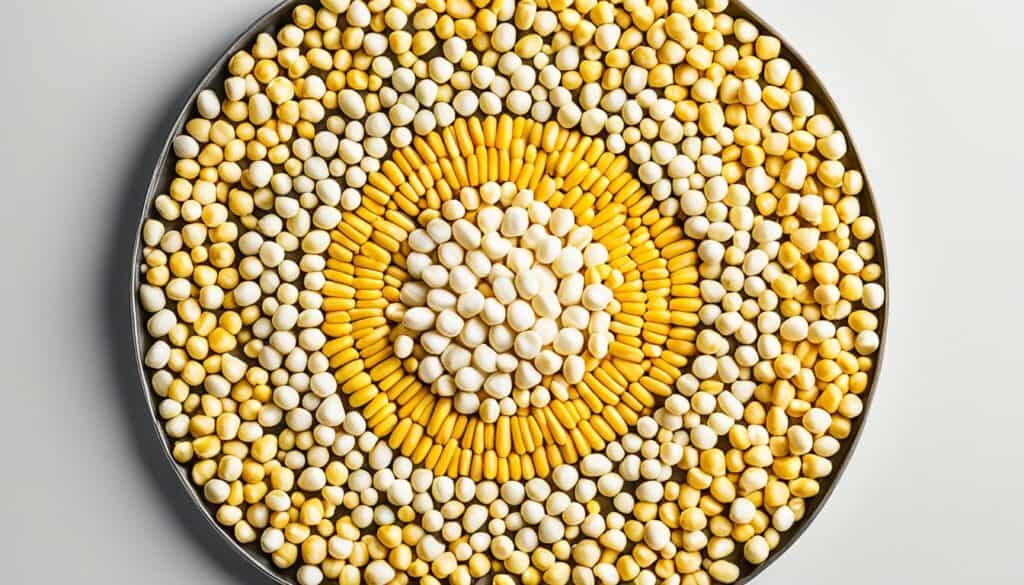
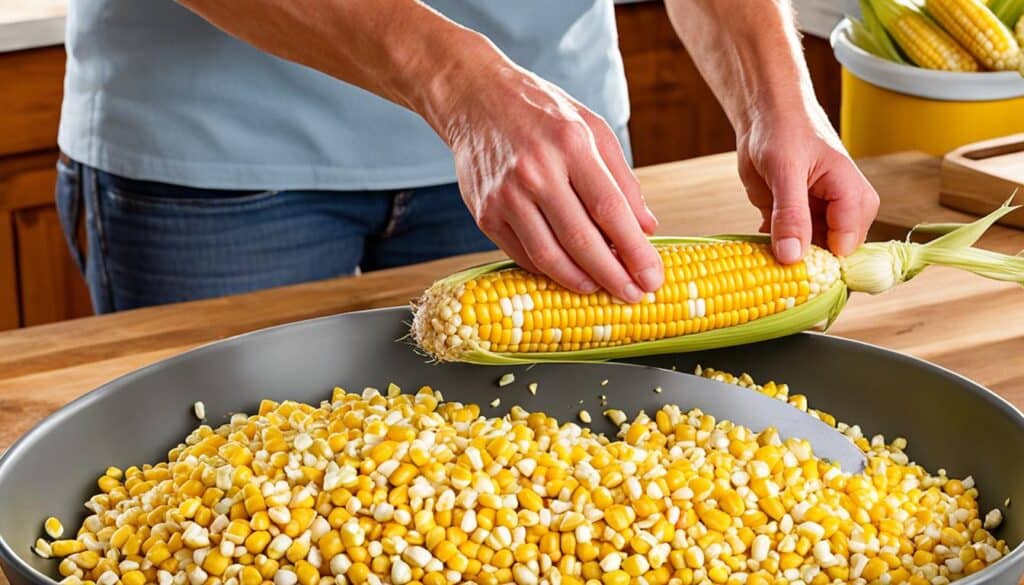
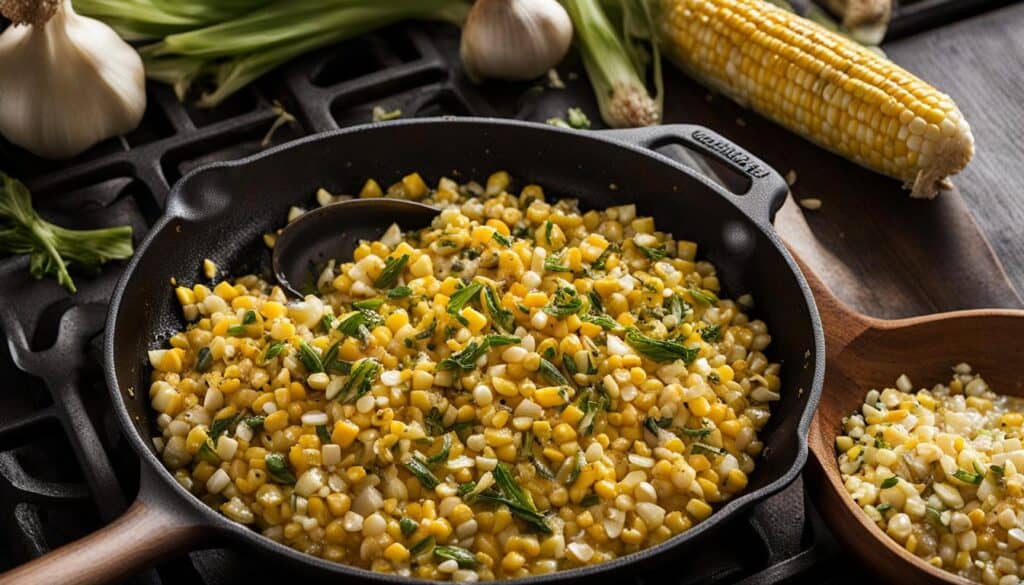
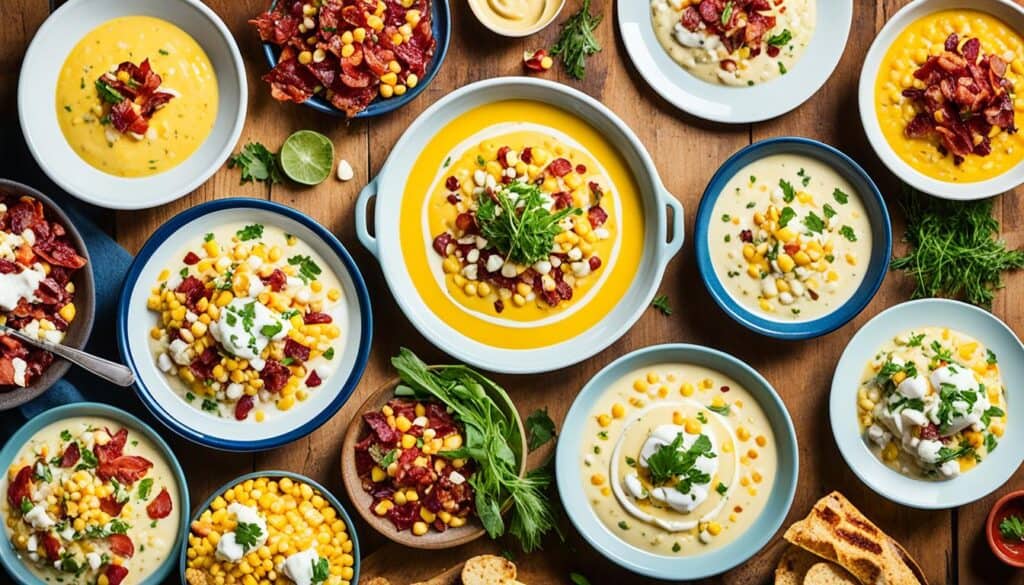
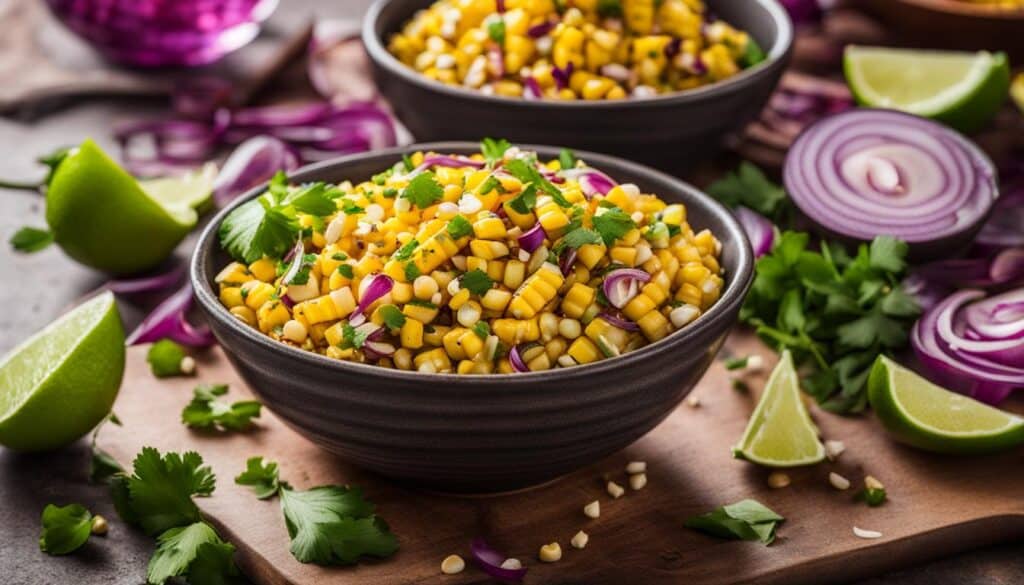



Leave a Reply